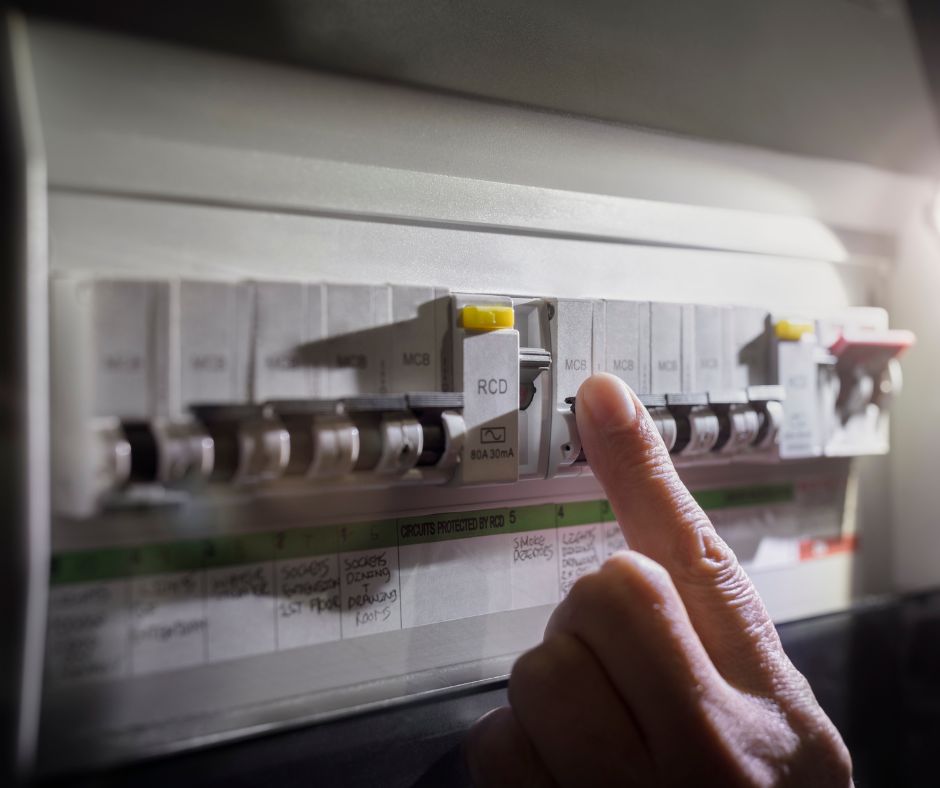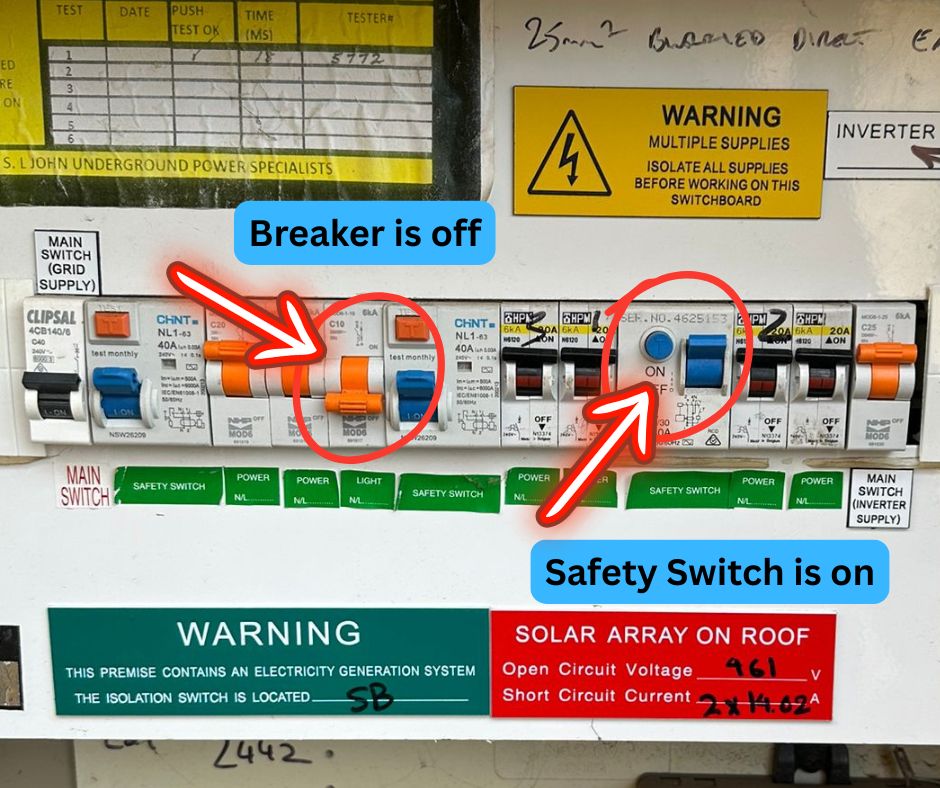
What are the warning signs your switchboard needs upgrading?
Frequent tripped breakers, flickering lights, burning smells, outdated fuses, and lack of safety switches are all signs that a switchboard may be unsafe or non-compliant with Australian Standards (AS/NZS 3000). These issues pose risks of electric shock, appliance damage, or fire. A licensed electrician should assess the system immediately.
Introduction To Switchboards
Your home’s switchboard is the core of your electrical system. If it’s outdated or showing signs of failure, it could pose serious risks to your safety. Many homes in in areas of Melbourne’s outer south east still operate on systems installed decades ago long before current electrical safety standards came into effect.
Upgrading your switchboard isn’t just good maintenance. Lets talk about the top warning signs that suggest your switchboard may need replacing, based on current regulations and safety risks.
1. Frequent Circuit Breaker Trips
If your circuit breakers trip often especially when using multiple appliances at once—it may be a sign that your board is overloaded. This can point to poor load distribution, undersized cabling, or ageing breakers no longer performing safely.
See our Electrical Panel Upgrade Services for more information.
2. Flickering or Dimming Lights
When lights flicker or dim while appliances start up, it can indicate voltage instability. This is often caused by loose or degraded switchboard connections, or a system that can no longer manage load surges effectively.
3. Burning Smell or Heat Marks
A burning smell near your switchboard—or visible charring, discolouration, or melted plastic is a red flag. These are typically signs of overheating or arcing inside the board, both of which dramatically increase fire risk.
Visit the Victorian Building Authority for official guidance on electrical fire hazards:
4. Use of Ceramic Fuses
Ceramic fuses are found in many switchboards from before the 1990s. They lack the fast-response safety capabilities of modern circuit breakers and offer no protection against electric shock. The current wiring standard—AS/NZS 3000:2018, requires safety switch (RCD) protection on all final sub-circuits.
If your board still contains ceramic fuses, it is out of date and potentially dangerous.
5. Warm or Hot Switchboard Panels
An operating switchboard should remain at room temperature. A warm-to-hot surface usually means poor internal connections or overloaded circuits. Prolonged overheating may degrade insulation or cause permanent damage to the internal wiring.
6. Outdated Board Can’t Support Modern Appliances
Homes today use more high power demand devices than ever before.
Larger air conditioning sytems, induction cooktops, electric vehicles, and multi-device work from home setups.
Old switchboards were not designed to handle these loads safely and can become dangerously overloaded.

7. No Safety Switches (RCDs) Installed
If your switchboard doesn’t include safety switches (RCDs), your property does not meet today’s basic protection standards. RCDs are mandatory for all new work and installations under AS/NZS 3000.
Additionally, under updated rental property laws enforced by Energy Safe Victoria since March 29, 2023, all Victorian rental homes must be fitted with compliant circuit breakers and RCDs. Review the full standard here:
8. Presence of Asbestos
Older switchboards especially those installed before 1985 may contain asbestos in the backing panel or internal components.
This poses significant health risks and can only be legally removed by licensed asbestos contractors.
Book an electrician for a Home Electrical Inspection before attempting to alter or remove any older switchboard housing.
9. Buzzing, Cracking or Burnt Breakers
Unusual sounds like buzzing, popping, or cracking from the board, or breakers with scorch marks or melted plastic, are all signs of internal arcing or overload. These issues need urgent attention to prevent potential fire or appliance failure.
10. Insurance and Legal Compliance
An outdated or non-compliant switchboard can void your insurance policy in the event of an electrical fire. Australian Standards are enforceable by both federal and state bodies. Any property undergoing renovation, appliance upgrade, or tenancy change is expected to comply with the latest safety requirements.
Why Choose Direct Point Electrical?
Based in outer east Melbourne, Direct Point Electrical specializes in switchboard upgrades, ensuring compliance with current standards and enhancing home safety. Our electricians specialise in legacy home upgrades and ensure compliance with:
- AS/NZS 3000:2018 Wiring Rules
- Energy Safe Victoria requirements
- All local DNSP and safety notice obligations
- Certification via Certificate of Electrical Safety (COES)
Our Switchboard Upgrade Services cover assessment, asbestos-safe removal, RCD installation, and optional surge protection.
FAQs
Q: How often should I have my switchboard inspected?
A: It’s advisable to have your switchboard inspected every 5 years or when adding significant electrical loads to your home.
Q: Can I upgrade my switchboard myself?
A: No. Switchboard upgrades must be performed by a licensed electrician to ensure safety and compliance with regulations.
Q: How long does a switchboard upgrade take?
A: Most upgrades can be completed within a day, minimizing disruption to your household.
Q: Will an upgraded switchboard increase my home’s value?
A: Yes. Upgraded electrical systems are attractive to buyers and can enhance property value.
Get Your Electrical Quote
Enter your job details below for a free quote or consultation!













